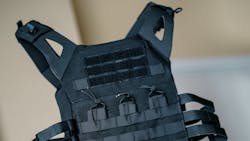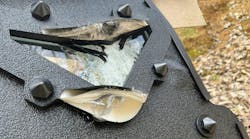In the late 1970s and through a large portion of the 1980s, lots of the “old timers” would make fun of the rookies who wore body armor. There were critical comments about how heavy it was, how it limited mobility and how “you’ll probably get shot in the head anyway, so what good will it do you?” Quite thankfully, the entire law enforcement community learned to stop being “old school” about it and appreciate the protection concealed armor can provide. We’ve come a long way since then – almost 50 years and the entire outlook about body armor has evolved as much as the armor products have.
In today’s world, uniform armor is as often worn externally as it is concealed. The amount of equipment each officer has to carry has certainly grown and the external armor carrier can serve as an excellent equipment platform. The gain is potentially doubled as it 1) allows for the armor to cover a bit more of the officer since id doesn’t have to be concealed, and 2) it gets some of the weight off the officer’s hips (on the duty belt) and onto the officer’s shoulders. Ultimately, the two combine to make the officer safer in uniform and healthier in the long term.
But is there anything the external armor does beyond providing ballistic protection and offering an equipment carrying platform? It’s easy to answer with a quick no, but maybe… yes. With armor being worn outside the uniform shirt almost as often as it is concealed now, the designs have evolved to look more “professional uniform” and less “tactical.” The mix of design features sometimes demands a trade off between function and appearance. In the attempt to make an external carrier look like the body portion of a uniform shirt, pockets buttons, pleats and more have to be included. That’s very different from a plain tactical carrier covered with MOLLE webbing. Having pockets and something that resembles a button-up front requires limiting the equipment carrying availability to the lower half of the carrier.
To support that type of design, the uniform shirt worn under the carrier needs to be plain, not having those pockets and buttons. If those are present, the weight of the body armor and constant movement through a duty day can cause irritation to the chest and abdomen of the officer wearing the combination. That’s why so many apparel companies that make professional looking external armor carriers also make companion uniform shirts that have a slick torso. Many are enhanced with materials that increase comfort, maintain body temperature and limiting bacterial growth.
In that vein, the body armor becomes more than ballistic protection and/or professional appearance. It becomes a piece of insulated external wear that can help keep an officer warm in colder temperatures, and thanks to the materials designs, cooler when the officer has to be working on hotter days.
With that in mind, we need to be aware of the multiple roles the external body armor performs. Identifying the external armor as a system comprised of the uniform shirt, the armor carrier, the armor panels, any hard plates and then all of the equipment mounted thereon, maintenance becomes much more than making sure things are secured properly. The uniform shirt has to be laundered correctly, in compliance with the directions from the manufacturer. The carrier has to be washed the same way but that may well mean having to remove every equipment pouch that is mounted on it first. Those pouches have a maintenance plan as well, most especially to keep them from being used if they are excessively worn or showing any signs of mold or mildew from improper storage. All of the equipment carried in those pouches or otherwise mounted on the vest needs to be maintained as well. The soft panels that go inside the vest and the hard plates that can be added also need to be maintained.
In case you hadn’t realized, suddenly, maintaining a vest isn’t just maintaining a vest. It’s maintaining multiple pieces that fit together to provide the officer with an armor and equipment carrier system that is a far cry from anything that was available in the 1970s and ‘80s. It’s important to keep that in mind. Just like law enforcement had to evolve out of “only wimps wear body armor” to the realization that it saves lives, considering it a single piece of kit is old school thinking now. Think about your armor system and maintain it properly as such.



